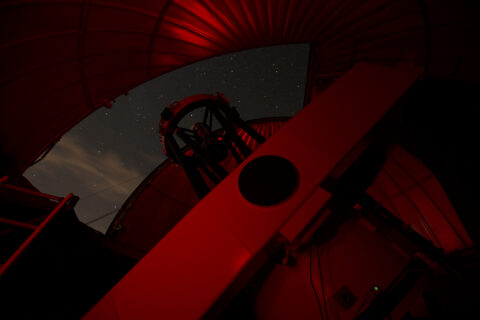New preprint of our latest stellar intensity interferometry results
Check out or new preprint titled On-sky demonstration of an ultra-fast intensity interferometry instrument utilising hybrid single photon counting detectors!
DOI: 10.48550/arXiv.2408.08173
Abstract:
Intensity interferometry is a reemerging astronomical technique for performing high angular resolution studies at visible wavelengths, benefiting immensely from the recent improvements in (single) photon detection instrumentation. Contrary to direct imaging or amplitude interferometry, intensity interferometry correlates light intensities rather than light amplitudes, circumventing atmospheric seeing limitations at the cost of reduced sensitivity. In this paper we present measurements with the 1.04 m Omicron telescope of C2PU (Centre Pédagogique Planète Univers) at the Calern Observatory in the south of France featuring hybrid single photon counting detectors (HPDs). We successfully measured photon bunching from temporal correlations of three different A-type stars – Vega, Altair and Deneb – in the blue at 405 nm. In all cases the observed coherence time fits well to both the pre-calculated expectations as well as the values measured in preceding laboratory tests. The best signal to noise ratio (SNR), with a value of 12, is obtained for Vega for an observation time of 12.1 h. The combination of HPDs and time to digital converter (TDC) results in a timing jitter of the detection system < 50 ps. Our setup demonstrates stable and efficient detection of the starlight owed to the large active area of the HPDs. Utilizing a new class of large area single photon detectors based on multichannel plate amplification, high resolution spatial intensity interferometry experiments are within reach at 1 m diameter class telescopes within one night of observation time for bright stars.
